Welcome fellow armchair traveler. Settle in for a teasing trip to temp you with some travelling tidbits. A 2 hour train ride from passionnant Paris to sans souci Strasbourg will land you in the Alsace region in northeastern France which borders Germany and Switzerland. The picturesque region, covering some 40,000 acres of vineyards, spans territory sandwiched between the Vosges Mountains on the west and the Rhine River on the east. Its vineyard boundaries are roughly Strasbourg in the north and Mulhouse in the south. The wildly popular wine and tourist Route des Vins – stretching 170km long from Marlenheim to Thannn - established in 1953 – celebrates its 70th birthday this year! This winding path connects numerous rolling vineyards and walled villages for over 100 miles. Famous communes, towns and cities include: Strasbourg, Ribeauville, Riquewihr, Colmar, Turckheim, Westhalen and Mulhouse.

Alsace can easily trace its wine history back to 58 BCE. In that year, a Roman army commanded by an insatiable Julius Caesar, conquered Alsace. In doing so, he drove out Germanic tribes and subjugated native Celts. When the battle dust had settled, the Romans planted grapevines that they had brought with them for just such an occasion. Alsace has been a wine-producing region ever since. Caesar also set another trend: Alsace would find itself a bloody pawn on the tragic chessboard of Europe many more times over the centuries. It would be traded back and forth, captured and lost, until it finally gained its freedom at the end of World War II. Notably, cultures are still so intertwined that both the French and German languages are heavily present.
Alsatian white wines are noted for their range of styles and varietals. Generally speaking, these wines are aromatic, fruity, dry to off-dry, expressive and possess a generous alcohol level. Most Alsatian wines are sold, per the German tradition, by varietal name, instead of the traditional French regional name. Red wines, less than 10% of wine output, are rarely made and rarer still to find outside the region. Sparkling wines tend to be in the Crémant style. When conditions permit, some “Vendange Tardive” (Late Harvest) and “Selection Des Grains Nobles” (Ripest/Sweetest Grapes) are produced which range from being generously fruity to lusciously sweet. An unctuous lush SGN would please any Sauternes, Barsac or Tokaji dessert wine fan.

Alsace wineries, vineyards and wines are compliant with the French AOC/AOP (Appellation d’Origine Contrôlée/Protégée) system which governs every facet of wine production from grapes to aging to bottling. Alsatian law dictates that a wine that declares a varietal on its label must be made of 100% of that varietal. Blended wines exist in Alsace AOC, but grape names are replaced by terms like “Gentil” or “Edelzwicker.” Also, most Alsatian still wines are packaged, in the slender Rhine-style bottle (Flûte d’Alsace) which sets it apart from other regions in France. The region’s wines are produced under 3 AOC designations – Alsace AOC, Crémant d’Alsace AOC and Alsace Grand Cru AOC. Some of the finest wines here are from the 51 Grand Cru designates. Key Grand Cru include Geisberg, Hengst, Mambourg, Muenchberg, Rangen, Schoenenbourg & Vorbourg, Scarcity of Grand Cru wines makes them more desirable as only about 4% of Alsatian wines possess Grand Cru pedigree and status. The wines merit this fame.
Most Alsatian wines are meant to be enjoyed young while they still exude the vibrancy and vitality of youth. That said, classic Dry Gewürztraminer and Dry Riesling are examples of two varietals which can display fruit, liveliness and elegance after almost 100 years in bottle! Grapes commonly used in Alsace are: Chasselas, Chardonnay, and Gewürztraminer, Muscat Blanc à Petit Grains, Pinot Blanc, Pinot Gris, Riesling and Sylvaner. Alsace is also renowned for their Eaux-de-vie (water of life) fruit brandies. Colorless, but packed with the essence of the fruit from which they are made eaux-de-vie are usually consumed as a postprandial. Some of the most popular are made from Mirabelle (yellow plum), Quetsch (purple plum), Framboise Sauvage (wild raspberry), Abricot (apricot), Kirsch (cherry), Pêche (peach) and Poire William (pear).
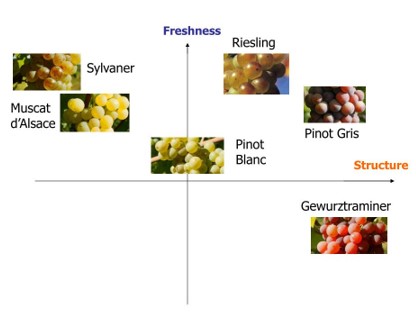
What makes Alsatian wines so unique and desirable? To answer this is to combine the practical, esoteric and ethereal. In short, Alsatian wines are produced in an area with a rich and long wine-making history. Growing grapes and creating wines has been so deeply interwoven into the fabric of Alsatian life that it is an inseparable facet of the psyche of the region. The struggle for dominance of the area, both by a diverse group of peoples spanning numerous centuries and man’s dominion over nature, has created a citizenry whose attributes of hard work, stubbornness and dedication have helped them not only survive, but actually thrive. Their unique, stimulating and provocative wines serve as a living testament to their perseverance, fortitude and success.
A short list of amazing Alsatian wine producers should include Maison Lucien Albrecht, Domaine Paul Blanck, Domaine Camille Braun, Domaine Marcel Deiss, Dopff au Moulin, Hugel et Fils, Domaine Josmeyer, Domaine Marc Kreydenweiss, Keuntz-Bas, Klipfel, Domaine Albert Mann, Charles Schleret, Domaine Schlumberger, Domaine Schoffit, Maison Pierre Sparr, Maison Trimbach, Domaine Weinbach and Domaine Zind-Humbrecht.
Food - I think acclaimed Alsatian native Chef Hubert Keller would approve of this list!
Quiche Lorraine: Savory egg custard studded with ham – cousin to skinny Tarte à l’Oignon.
Choucroute Garnie: Sauerkraut with potato, salt pork, sausage and ham.
Tarte Flambée (Flammekeuche): An Alsatian pizza with cream, bacon and onions.
Truite au Bleu: Mountain trout lightly poached in water with red wine vinegar which turns the fish blue – considered a rare Alsatian delicacy.
Pâté en Croûte: Pâté baked in pastry – seriously, an Alsatian art form.
Coq au Riesling: Dry Riesling, chicken, lardons, onions, and mushrooms over spätzle or egg noodles.
Baeckeoffe: Stew casserole comprised of marinated mutton, pork, beef, and potatoes and wine.
Kugelhopf: Light, sweet brioche with raisins, almonds, sugar and citrus zest.
Tarte aux Poires: An eggy custard tart filled with baked pears.
Munster: Strong cows’ milk cheese; esp. aged – a bit different than the buttery Meunster in the U.S.
Notable Vintages 2021, 2020, 2019, 2018, 2017, 2015, 2011, 2010, 2009, 2008, 2007, 2005, 2002, 2001 & 2000
A General Note on Vintage Assessments
Gentle readers and generous imbibers, you should always perceive vintage assessments with a measure of deserved discernment. A blanket “94” rating for a vintage for a region or country is highly subjective and potentially misleading as a sweeping generalization. A dozen wine writers or critics will likely have a dozen different assessments even if they reach a consensus supported by wines produced. Instead, seek specificity by location in a region for a more precise read on how a region fared in a vintage. The vagaries of microclimates, vineyard locations and weather throughout a season dramatically impact a specific location within a region or country. What may constitute a “94” in Alsace doesn’t guarantee a “94” in the same vintage in Bordeaux. And what happens in an Alsatian vintage in Dambach can be different in Ribeauville.
For example, most critics agree 2018 was a good year for Alsace, but the devil is in the details. Ample heat during the season was great for creating ripeness and concentration in Pinot Gris and Pinot Noir, but Riesling was determined to be less than classic due to the heat. 2015 saw richer Alsace wines compared to 2016’s more classic Alsace wine profile, but a deeper dive would likely find some anomalies. The unicorn 2009 is considered an exemplary vintage for practically all varietals throughout Alsace. A rare, but rewarding assessment that hasn’t been rebutted by time. Lastly, weather extremes – too much/too little sun, temperature, rain, sleet, hail and frost – and at what point they arrive in the growing/harvesting season – can secure a harvest or doom it. To illustrate this point note that most Alsace Vendange Tardive & SGN production varies radically from year to year. In the worst of years production can be all but non-existent. These two wine types most often fall victim due to the requisite long late harvest hang times and strict rules regarding their production. The longer they hang on the vine late in the season the greater the risks that bad things can happen. It is the grape farmer’s lot in life that success or failure is a matter of degrees. And don’t even get me started on vine diseases and vineyard insect pests.
Thanks for dropping by. If your interest in Alsace, its vineyards, wines and food has been piqued, I’ve done my part. I look forward to sharing another armchair journey trip tease with you by and by.
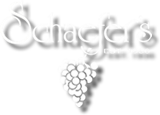

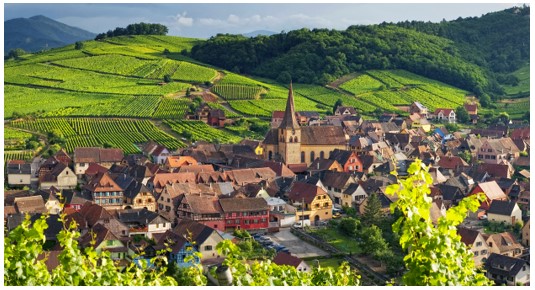

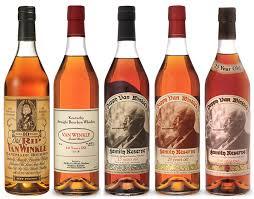




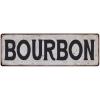
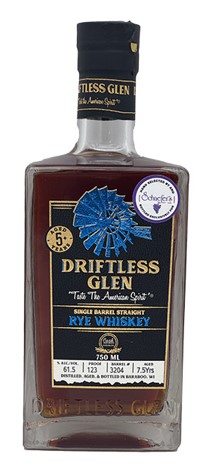

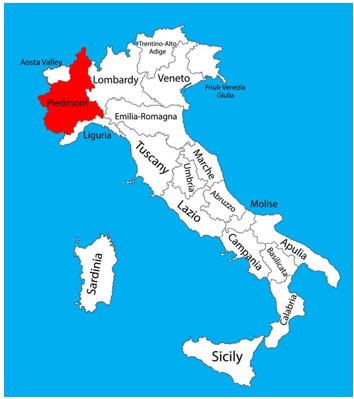
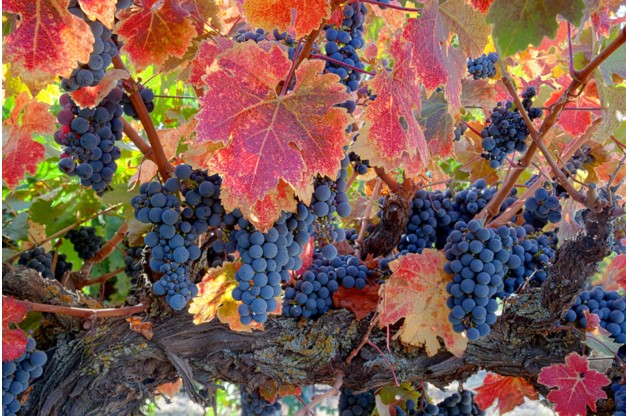
Comments